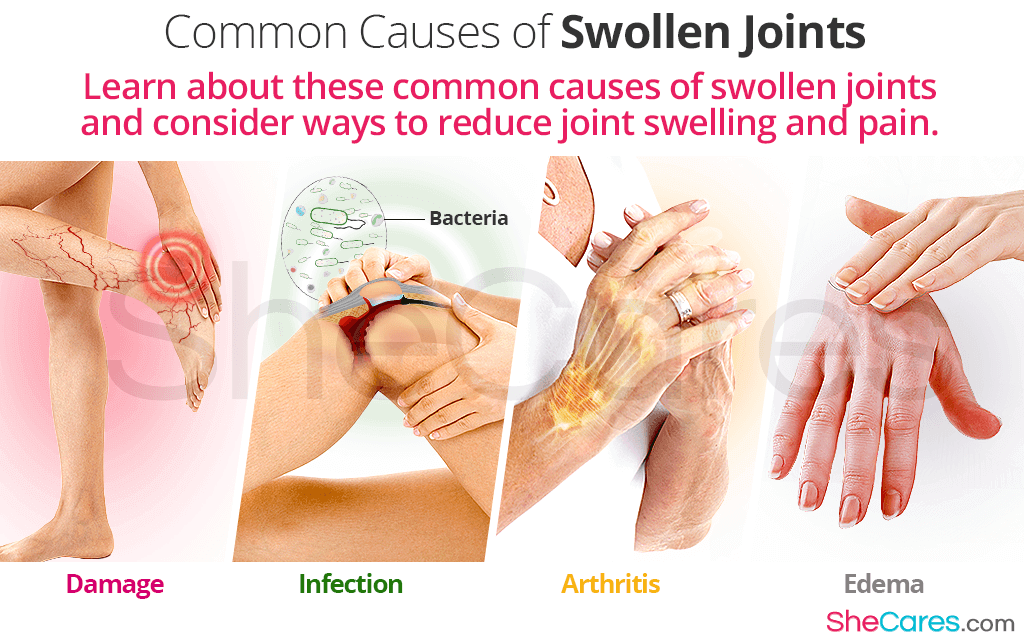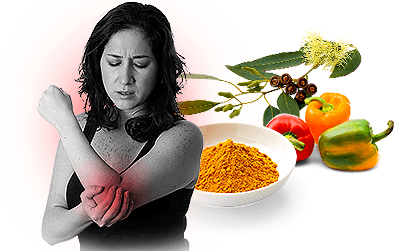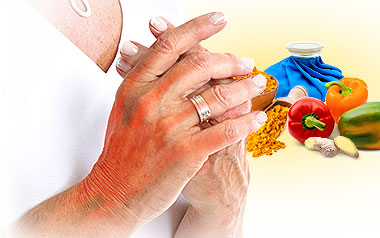Swollen joints are a common complaint among many women. Whether it causes pain or not, it can be alarming and somewhat troubling, particularly if the condition affects your day-to-day activities. Joint swelling can present itself at any time, and can often be difficult to predict. For this reason, it is helpful to understand some of the reasons why it might occur, and different ways in which women have been able to successfully treat the problem.
Common Causes of Swollen Joints
There are a number of conditions that can cause the joints to swell - sometimes in localized areas such as the hands and feet, and sometimes indiscriminately affecting joints all over the body. The most frequently seen reasons include:
Damage. If a joint becomes damaged either through injury or repeated strain, you will likely notice swelling in the affected area. This is due to the body's natural reaction of increasing blood flow to the area.
Infection. Generally seen in the knees and hips, this is a type of arthritis - known as septic arthritis - that is caused by the presence of bacteria in the joint. It can be particularly painful, involving redness, heat, and swelling.
Arthritis. This condition comes in many types, each involving the deterioration of cartilage, due to unexplained inflammation around the joints. This can lead to stiffness, as well as joint pain and swelling.
Edema. Predominantly causing swollen joints in the hands and feet, edema occurs when the body retains fluid which then builds up in the tissues. This condition is usually painless, but can understandably cause concern.
How to Treat Joint Swelling
When it comes to joint pain and swelling relief, both short and long term approaches must be considered. It is possible to become somewhat complacent if a “quick fix” is successful for alleviating initial pain and swelling, but it is important to consider treating the underlying condition. Popular solutions for swollen joints are:
Ice packs. The cold temperature of an ice pack can be extremely effective for reducing swelling of the joints. It is advised that one should be applied for around twenty minutes per hour, as more than this can actually worsen inflammation.
Elevation. For swollen joints caused by injury or edema, doctors recommend trying to keep the affected area elevated. Holding the limb above heart-level will encourage blood flow away, thereby slowly decreasing inflammation.
Ibuprofen. This anti-inflammatory can be taken orally in the form of a tablet, or it is also possible to buy as a cream for applying to the specific area required. The reduction of swelling will help to ease pain relatively quickly.
Non-steroidal anti-inflammatory drugs (NSAIDs). These might be prescribed by your doctor, particularly for treating joint pain swelling caused by arthritis. They can lessen inflammation, ease pain, and even reduce a high temperature which might occur with septic arthritis.
Swelling can either by due to the body's natural reaction to damage, or its retaining fluids. While the process occurs as a defense mechanism designed to heal or protect the body, if the condition worsens it can actually be detrimental and cause harm. For this reason, and for personal comfortability, it is advisable to consider ways to reduce joint swelling and pain.


